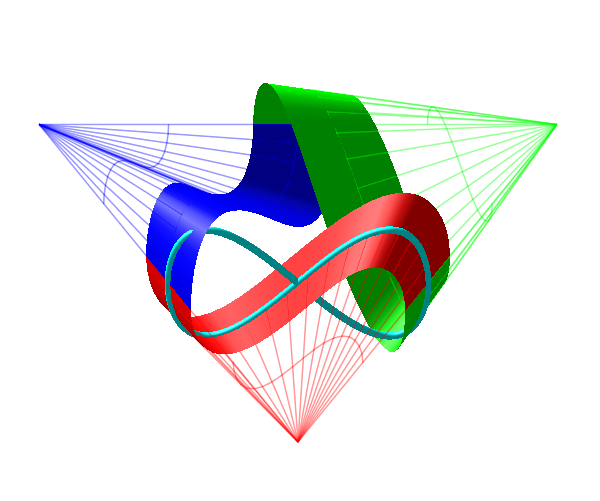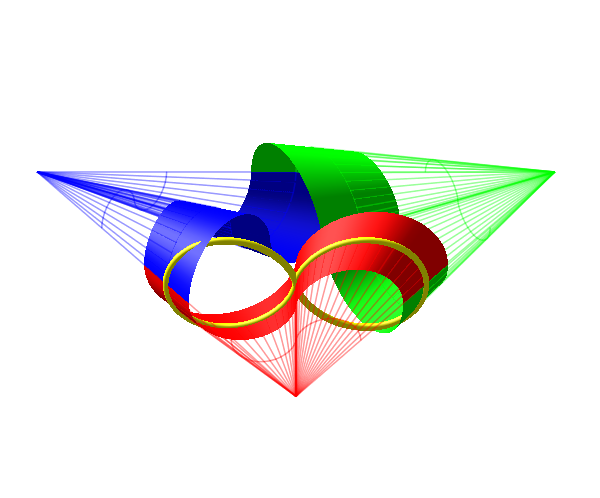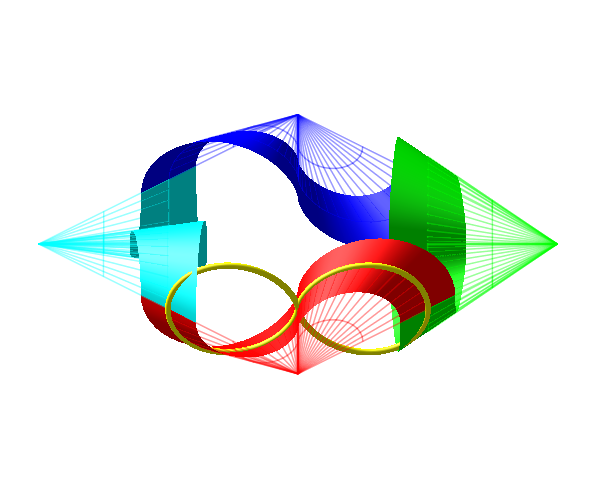directrice des cônes : lemniscate
trois cônes
quatre cônes
directrice des cônes : lemniscates déformées
coX=-0.5
anaglyphe à regarder avec des lunettes rouge-cyan

coX=0.8
anaglyphe à regarder avec des lunettes rouge-cyan

directrice des cônes d'équation polaire : ro=cos(t)^2
trois cônes
quatre cônes
